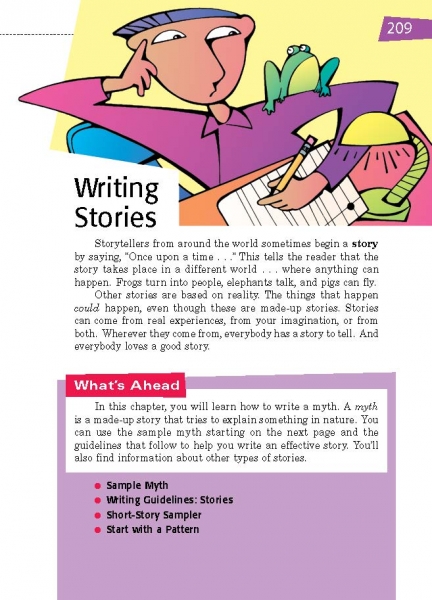Page 209 from

Start-Up Activity
Read aloud the introduction on page 209, which addresses the popularity of stories and storytelling. Discuss the two kinds of stories—fanciful and reality-based—and talk about the kinds of stories your students enjoy reading and writing. Then ask them if they know any myths—the story-type explained in this chapter. They should consider cultural myths, urban myths, nature myth, etc.
Think About It
“I like to write as though my readers are without television, radio, movies, or anything else.”
—Joyce Carol Thomas

Start-Up Activity
Read aloud the introduction on page 209, which addresses the popularity of stories and storytelling. Discuss the two kinds of stories—fanciful and reality-based—and talk about the kinds of stories your students enjoy reading and writing. Then ask them if they know any myths—the story-type explained in this chapter. They should consider cultural myths, urban myths, nature myth, etc.
Think About It
“I like to write as though my readers are without television, radio, movies, or anything else.”
—Joyce Carol Thomas


